Old-timers like me can remember when every issue of Chess Life came with a Larry Evans column called “What’s the Best Move?” Evans would give you positions with three choices of possible moves. The idea, I think, came from a book of the same name that he wrote in 1973.
I’m actually not too fond of quizzes that do part of the thinking for you, by giving you three options. In a real game, part of the challenge is coming up with an appropriate list of candidate moves.
However, one good thing about Evans’ approach is that it teaches you not to make up your mind until you have looked at three possibilities. Many of my students only analyze one move. In fact, I have that problem too, when I’m playing speed chess or getting seriously low on time.
I also liked the fact that Evans called it “What’s the Best Move?” not “What’s the Winning Move?” In reality, there aren’t that many moments in our games when it’s our move and there is one and only one way to win. More frequently we just have to make the best choice out of several alternatives.
Anyway, I thought I would do a Larry Evans-style quiz today, except I’ll give you four options per move. The other interesting wrinkle is that every one of these games was played by me against the computer within the past week! In all positions it’s my turn to move. (Understandably, because I don’t care about how to improve the computer’s “thought” process — I care about how to improve mine.)
Position 1.
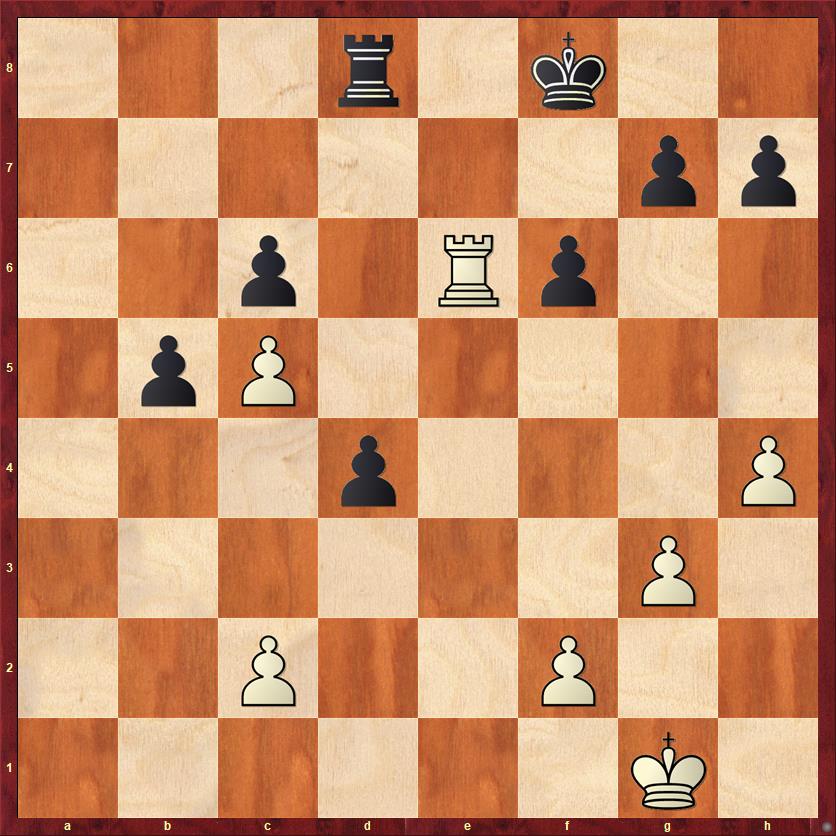
3r1k2/6pp/2p1Rp2/1pP5/3p3P/6P1/2P2P2/6K1 b – – 0 33
Your choices: (A) 33. … Re8; (B) 33. … d3; (C) 33. … b4; (D) 33. … Rc8.
Position 2.
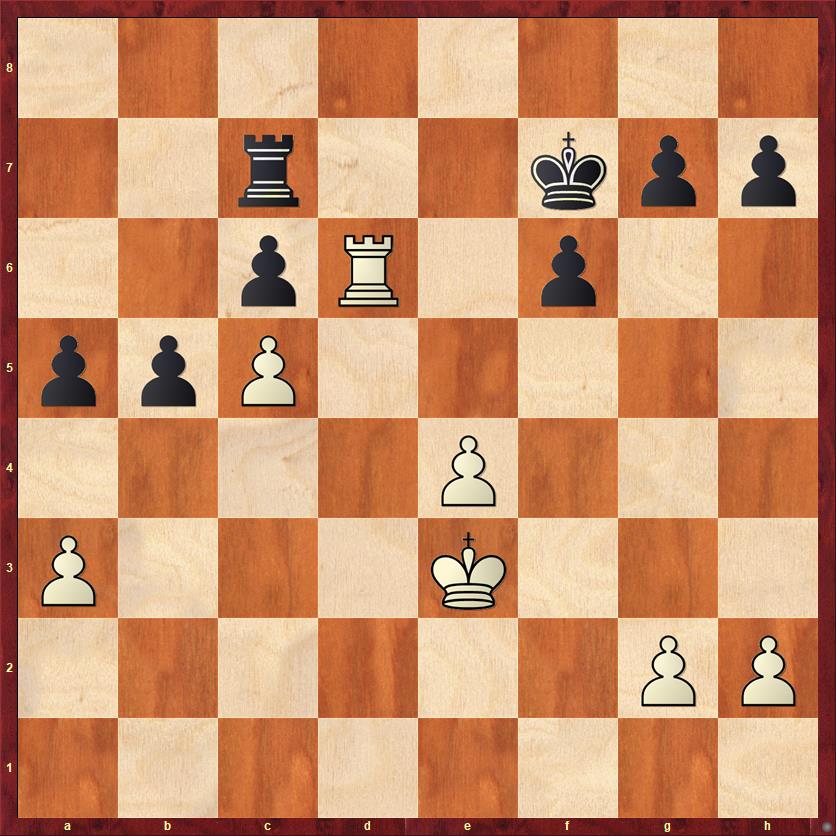
FEN: 8/2r2kpp/2pR1p2/ppP5/4P3/P3K3/6PP/8 b – – 0 36
Your choices: (A) 36. … Ke7; (B) 36. … Kg6; (C) 36. … b4; (D) 36. … a4.
Position 3.
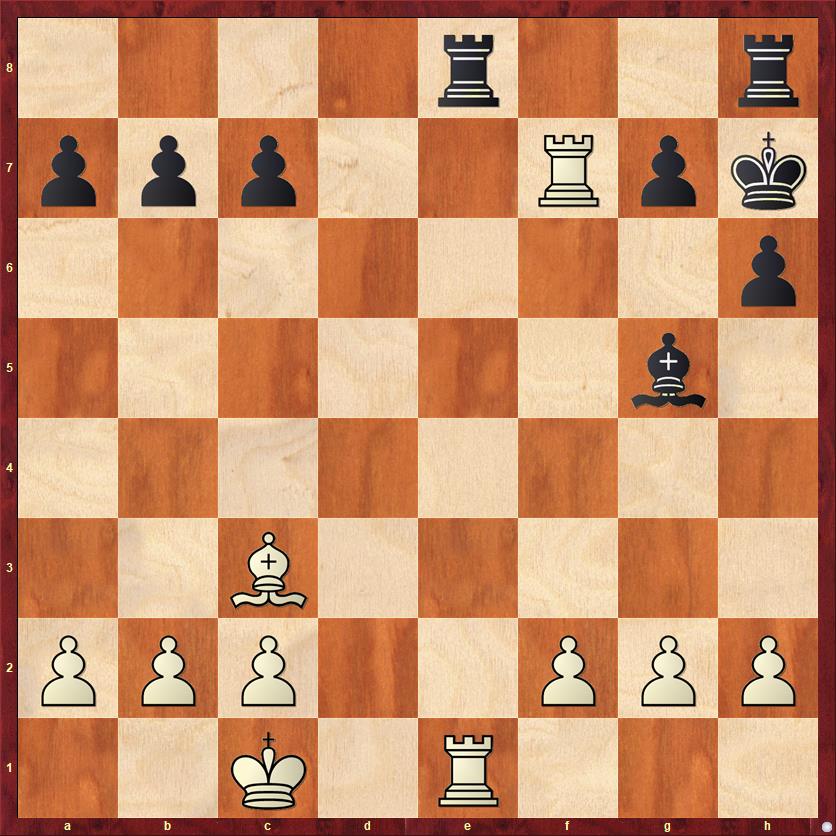
FEN: 4r2r/ppp2Rpk/7p/6b1/8/2B5/PPP2PPP/2K1R3 w – – 0 26
Your choices: (A) 26. Kb1; (B) 26. Kd1; (C) 26. f4; (D) 26. Bd2.
Position 4.
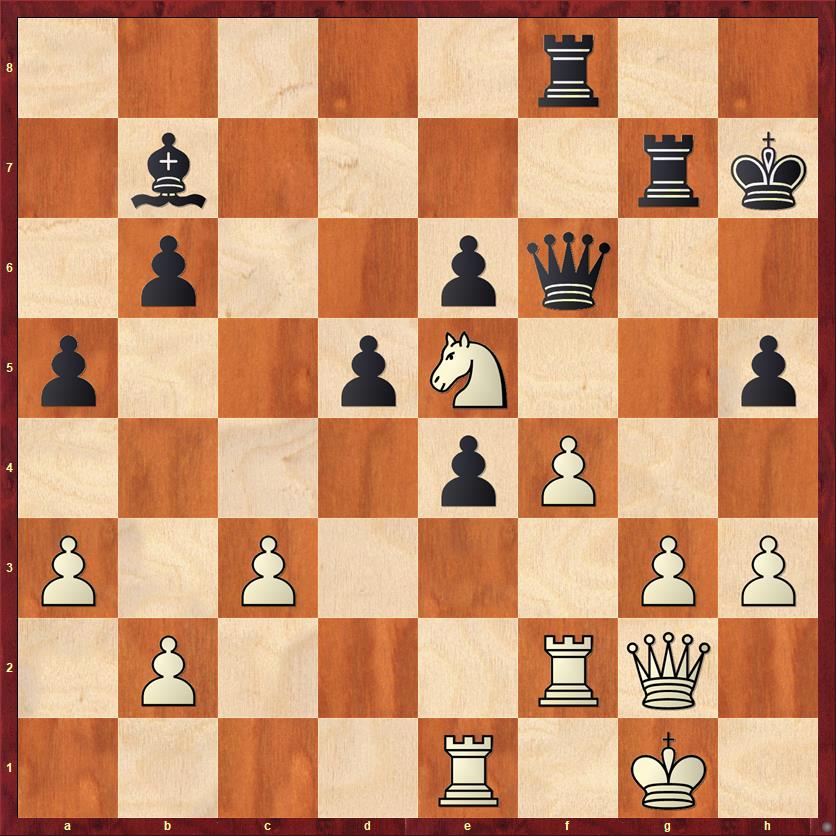
FEN: 5r2/1b4rk/1p2pq2/p2pN2p/4pP2/P1P3PP/1P3RQ1/4R1K1 b – – 0 33
Your choices: (A) 33. … e3; (B) 33. … Qe7; (C) 33. … d4; (D) 33. … Rfg8.
Position 5.
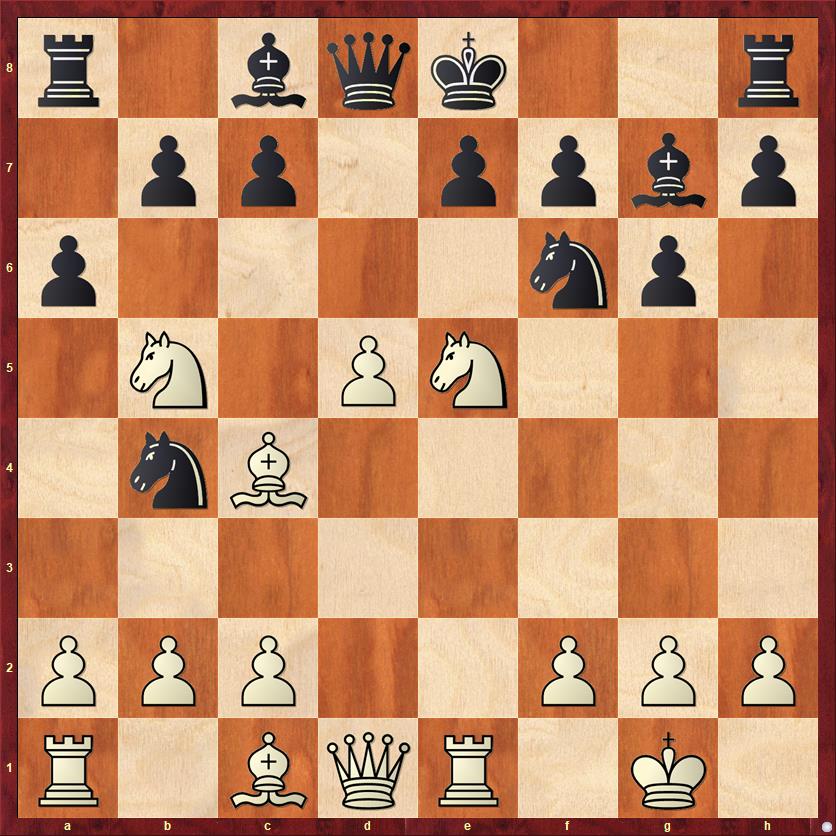
FEN: r1bqk2r/1pp1ppbp/p4np1/1N1PN3/1nB5/8/PPP2PPP/R1BQR1K1 w kq – 0 13
Your choices: (A) 13. c3; (B) 13. Nc3; (C) 13. d6; (D) 13. Nxf7.
Answers:
Position 1. Answer: (C).
This was a game I played this morning. I played (B) 33. … d3?, and the game rapidly headed toward a draw after 34. cd Rxd3 35. Kg2 (A little twist of the knife. White doesn’t even have to take on c6 yet because there’s nothing I can do to stop it.) 35. … Rc3 36. Rxc6 b4 37. Rb6.
Option (D), 33. … Rc8? is unforgivably passive. You should never passively defend in a rook and pawn endgame unless you absolutely have to. In this case, White wins a pawn anyway after 33. … Rc8? 34. Rd6.
Option (A), 33. … Re8 is not a bad idea, but White has good drawing chances. Ideally, White would like to trade his c-pawn for Black’s d-pawn and establish his rook behind the b-pawn. If he can do this and force Black’s rook to defend from the front of the b-pawn, then it will be a theoretical draw.
Variation (C) is best because it retains two different pawn-break options depending on what White does. If 33. … b4! 34. Rxc6? then I win by pushing the b-pawn b-pawn: 34. … b3! 35. cb d3 and White will have to sac his rook to stop the d-pawn. On the other hand, if 33. … b4! 34. Kf1 now I win by pushing the other pawn: 34. … d3! 35. cd b3. Now 36. Rxc6 Rb8! is too slow for White, so he will have to drop his rook back with 36. Re4 or 36. Re2. In either case White will force Black to blockade the b-pawn with his rook, and he will then stroll with his king to d5 and take Black’s c-pawn. Meanwhile Black can perhaps win the b-pawn, but then rooks get traded and White has an easy win in the K+P endgame.
Position 2. Answer: (A).
This position may look a little bit like Position 1, because it came out of the same opening (a Scotch Game where Fritz unaccountably likes to play a dubious pawn sacrifice). Anyway, this one should be pretty easy, but nevertheless I botched it in time pressure.
The question is: which way should the king go? The answer becomes obvious once you ask yourself, “What is my opponent’s plan?” Clearly White wants to bring his king to the queenside to stop Black’s soon-to-be-passed pawn on the b-file. But after 36. … Ke7, White can never set foot on the d-file, because 37. Kd4 (or d3 or d2) will always be met by … Rd7, trading rooks and easily winning the K+P endgame.
Black’s plan, therefore, is as follows: (a) Play … Ke7 to keep White’s king on the kingside; (b) push the queenside pawns and force White’s rook into a passive position in front of the b-pawn; (c) activate his king and rook and target the c-pawn, as in Position 1. As before, if Black can trade the b-pawn for the c-pawn and trade rooks in the process, it’s a win.
Instead, I played (B) 36. … Kg6?, moving my king in the wrong direction. The kingside is not where my advantage lies. I ended up drawing the game after 37. g3?! (Not really necessary, but it tempted me to go further in the wrong direction.) 37. … Kg5? 38. Kd4 Kg4 39. e5 fe+ 40. Kxe5 and I reluctantly, but correctly, concluded that I needed to go for a draw by repetition with 40. … Re7+ 41. Kd4 Rc7 42. Ke5 Re7+ etc. Move (C) is premature and lets White draw with 36. … b4 37. ab ab 38. Kd3. Move (D) makes no sense at all, as White is able to easily blockade White’s pawn majority.
Position 3. Answer: (B)
After two problems that I got wrong, turning wins into draws, here’s one that I got right. But I drew anyway!
Until this move, I just thought that I was completely winning. I have a rook on the seventh rank, with all sorts of tempting targets: the pawns on c7, b7, a7, and especially g7! Then the computer played 25. … Bg5+, a move that I at first thought was “just a spite check.” Then gradually it dawned on me that I had only one move to retain any advantage at all, and a couple of ways to lose!
First, the lemons. I put in (D) just to keep you honest. On the surface, 26. Bd2 looks plausible, but it’s actually a helpmate after 26. … Rxe1 mate! Brrrr! That’ll send cold shivers down your spine.
Also, (A) is horrible. After 26. Kb1 Rxe1+ 27. Bxe1 Rd8, it transpires that White has to give up the bishop to stop checkmate. Yikes! What’s going on here?
Option (C) is not quite as horrible, but it’s not good either. After 26. f4 (my original plan) 26. … Rxe1+ 27. Bxe1 Kg6! 28. Rxc7?? Bxf4+ wins the rook. So instead White has to play 28. Rd7, but after 28. … Bxf4+ my advantage is completely gone.
By process of elimination, the only move for White is (B). This was the last on my list of options originally. But after 26. Kd1, Black now actually has to face the problem of how to defend g7 and c7. He has only one way: 26. … Rxe1+ 27. Kxe1 Re8+ 28. Kf1 Re7 (all of which happened in the game). In this position White should still win. I have a solid extra pawn with no weaknesses, and my pieces are as active or more active than the computer’s. But the close call on move 26 affected me psychologically, I think. I never could quite regain my confidence, and I ended up making another mistake and drawing.
Position 4. Answer: (C)
I hope you were paying attention to my previous posts on pawn breaks! Black’s pieces are all loaded for bear — all except the bishop on b7, which desperately wants to join in. After 33. … d4! 34. cd e3! White has to give up the exchange: 35. Rf3 Bxf3 36. Nxf3. And now comes another terrific pawn break: 36. … h4!, prying open the g-file in spite of White’s attempts to keep it closed. If 37. Nxh4 Rxg3! the attack on the g-file is decisive. If 37. g4 Qxf4 and the pressure on the f-file is decisive. If 37. Ng5+ Rxg5! 38. fg Qf2+ wins. Wow, what great stuff!
If you chose (A), at least your heart is in the right place but you got the move order wrong. After 33. … e3 34. Rxe3 d4 35. Ref3 dc 36. bc Qe7 37. Qf1 Bxf3 38. Rxf3 Black has a better endgame with an exchange for a pawn, but there is still some work to be done. Clearly this is not quite as awesome as line (C).
Variations (B) and (D) are wrong-headed though not actually losing. Both of these moves shift pieces that were already well-placed to new positions that are not clearly better. It’s much better to bring a new piece into the attack (the bishop on b7) than to monkey around with your already well-placed pieces. And both moves give White time to prevent the pawn breaks that put his position in such peril.
So, of course, I played… variation (D). Proving that I had not learned my own lesson about pawn breaks. After a few more inaccurate moves I had to tender my resignation.
Position 5. Answer: (B), (C), or (D)!
I wanted to end with an easy one — the only one of these five games that I actually won! Both (C) and (D) are absolutely crushing, and I’m glad to say that I picked (D). After 13. Nxf7! Kxf7 14. d6+ e6 15. Nxc7 Rb8 16. Nxe6 Bxe6 17. Bxe6+ Kf8 I already have three pawns for a piece and Fritz’s king is in grave peril. The game finished 18. c3 Nc6 19. d7 Qe7 20. Bf4 Qd8 21. Bd6+ Ne7 22. Bxb8 Nxd7 23. Qxd7 and Fritz threw in the towel.
Answer (B) gets maybe half credit. It’s a move that fails to take advantage of the (rare) opportunity to blow the computer off the board with tactics. However, it turns out to be a “sneaky good” move. After 13. Nc3 White is threatening simply to win Black’s trapped knight with 14. a3. Thus, Black does not have time to castle, which he desperately needs to do. Instead he has to play something like 13. … c6 to rescue the knight, and after 14. d6! e6 15. Bg5 White still has tons of pressure.
If you chose (A), you were focused on the wrong part of the board. The king should be the main target. After 13. c3? ab 14. Bxb5+ c6 15. dc bc 16. Nxc6 Nxc6 17. Bxc6+ Bd7 18. Bxa8 Qxa8 we get a position I would certainly not want to play as White, where White has R+2P versus two pieces, but Black’s extra pieces look as if they will have Benko Gambit-style pressure against White’s denuded queenside.
Hope you enjoyed these positions!



{ 4 comments… read them below or add one }
What would you recommend as good calculation exercises? I scored 0/5 because of calculation errors and difficulty visualising the resulting positions.
First, don’t feel bad, because I got only 2/5 on them! That’s one reason I posted them.
If you’re fairly new to chess, I like “Tactics Time” by Tim Brennan and Anthea Carson, because it is all positions from real amateur games. So the players fall into all the classic errors, the ones you are likely to make in your games. I use this book almost every week in the kids’ chess club that I run.
If you’re more advanced, say 1500 or above, you might find the positions in Brennan and Carson a little bit too elementary. If you’re a member of chess.com, I would recommend training with their puzzles. I wouldn’t bother with Puzzle Rush; just do the regular puzzle mode where you can take time to think. I believe that the puzzles adapt to your strength, and they also tell you the tactical motifs involves (after you solve them).
We chose the same moves for the first two positions.
In position 3 I thought 1. f4 was a bit better than 1. Kd1 Re1+ 2. Ke1 Re8+ 3. Kf1 Re7 4. Re7 Be7
My logic went 1, f4 Re1+ 2. Kd2! with three threats, the bishop, the rook and mate on g7. It looks like 2 … Bf6 is forced, then 3. Ke1 Bc3+ 4. bc3 leads to a
very good R+P ending for White and . 3. … Re8+ 4. Kf2 Re7 5. Re7 Be7 is the same bishop ending as in the first line, but White has gained two tempos for his kingside pawn advance.
There is also a nice trap. After 1. f4 Re1+ 2. Kd1 Rhe8 3. Rg7+ Kh8 4. Rg5+ Kh7 5
Rg7+ Kh8 6. Re7+ Kg8 7. Re1
I position 4 I chose 1… e3 I wasn’t clear on how Black was winning after 1 … d4 2. Rff1 e3 3. Qc2+ Kh8 4. Kh2 and I liked the position after 1 … e3 2. Re3 d4 3. Ref3 when it looks like the g3 pawn is falling. Rfg8.
In position 5 I rejected 1. Nc3 ? because of 1 … Bf5 when it’s hard to see how White stops the knight capture on c2 White is still better but it’s nowhere near as big an edge as in the other lines.
.
3.
2.Kd2 Re7 -+
4.
3. … Rfg8 4. g4 +/=
5.
1. … Bf5 2.Bb3 +-